Your front door isn’t just an entrance—it’s a statement piece that sets the tone for your entire home. Selecting the right color can dramatically boost curb appeal and reflect your personal style.
With countless options available, choosing the perfect hue might seem overwhelming, but these expert tips will help you find a front door color that feels just right.
1. Consider Your Home’s Architectural Style
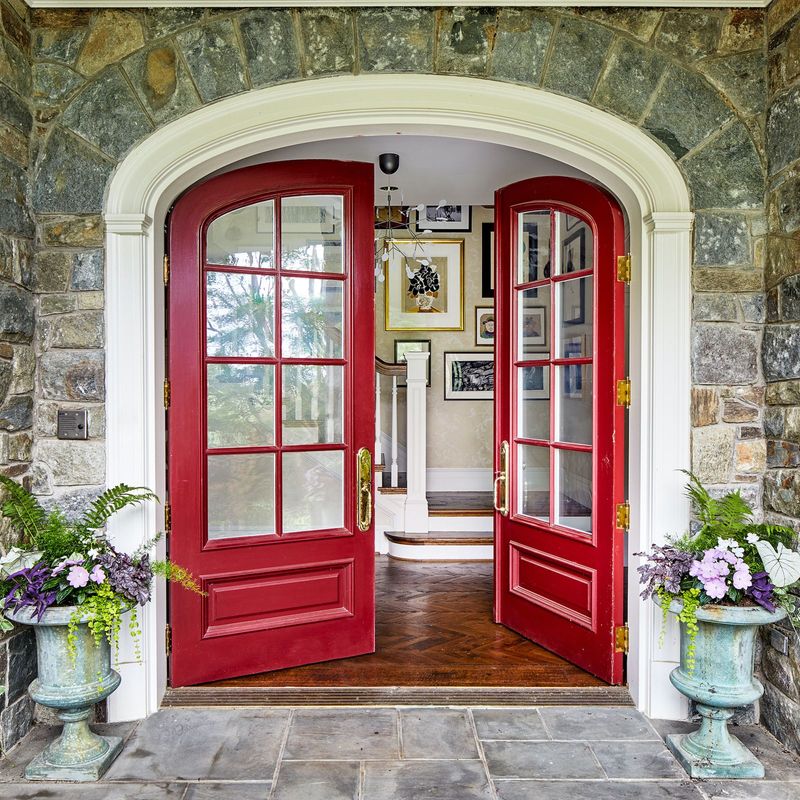
Victorian homes practically beg for rich jewel tones like burgundy or forest green, while mid-century modern designs shine with vibrant oranges or teals. Your home’s architectural DNA should guide your color choice.
Ranch-style homes often look best with earthy tones that complement their horizontal lines. Colonial homes? Classic white, navy, or red doors maintain their traditional character while adding a touch of personality.
2. Match the Door Color to Your Exterior Palette

Already have a stunning stone facade or distinctive siding? Don’t fight it—complement it! Your door color should harmonize with existing exterior elements rather than competing for attention.
Grab paint swatches that pull from undertones in your home’s exterior. For gray siding, consider navy blue or charcoal doors. Tan or beige exteriors pair beautifully with warm reds, deep browns, or even soft sage greens.
3. Use the Front Door to Add a Pop of Personality

Feeling bold? Your front door offers the perfect canvas for self-expression without overwhelming your home’s exterior. A splash of unexpected color can transform a forgettable facade into a neighborhood standout.
Yellow doors radiate cheerfulness. Purple suggests creativity and confidence. Even within traditional colors, choosing a specific shade—like coral instead of red—adds distinctive character while keeping things tasteful.
4. Test Paint Samples in Natural Light
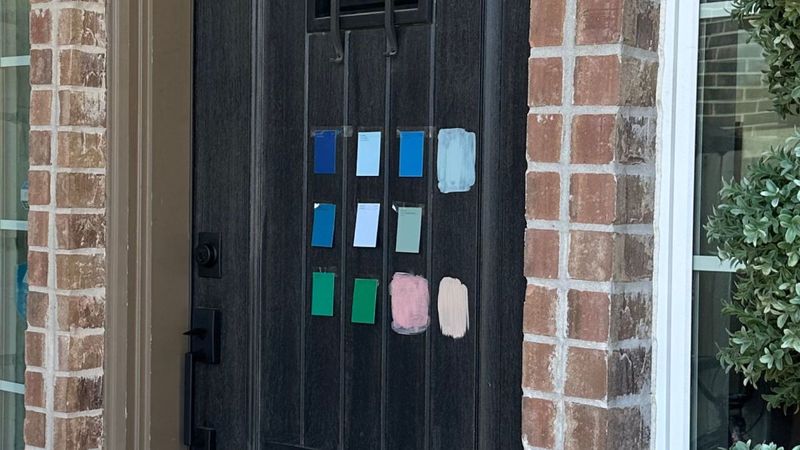
What looks perfect on a tiny paint chip often transforms dramatically when applied to your door. Colors can appear completely different depending on your home’s exposure and surrounding landscape.
Paint large sample boards and prop them against your door at different times of day. Morning light versus afternoon sun can reveal surprising variations. That perfect sage green might look muddy at sunset or washed out at noon.
5. Factor in Your Landscaping Tones
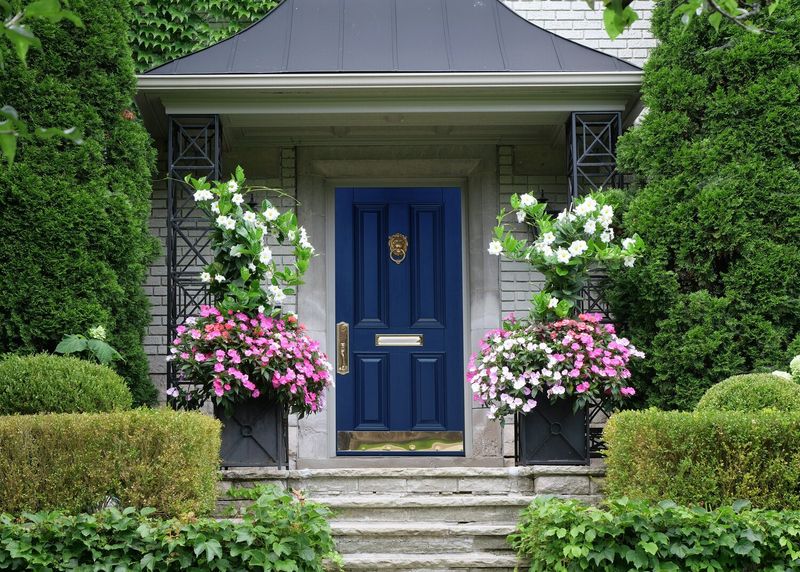
Magnificent maple trees or vibrant hydrangeas shouldn’t clash with the entryway. Consider the garden palette when selecting front door colors.
Surrounded by lush greenery? Rich reds or blues create stunning contrast. If your landscape features colorful flowers, consider a more neutral door that won’t compete. Desert landscapes with cacti and succulents pair beautifully with terracotta or turquoise doors.
6. Coordinate With Roof and Trim Colors
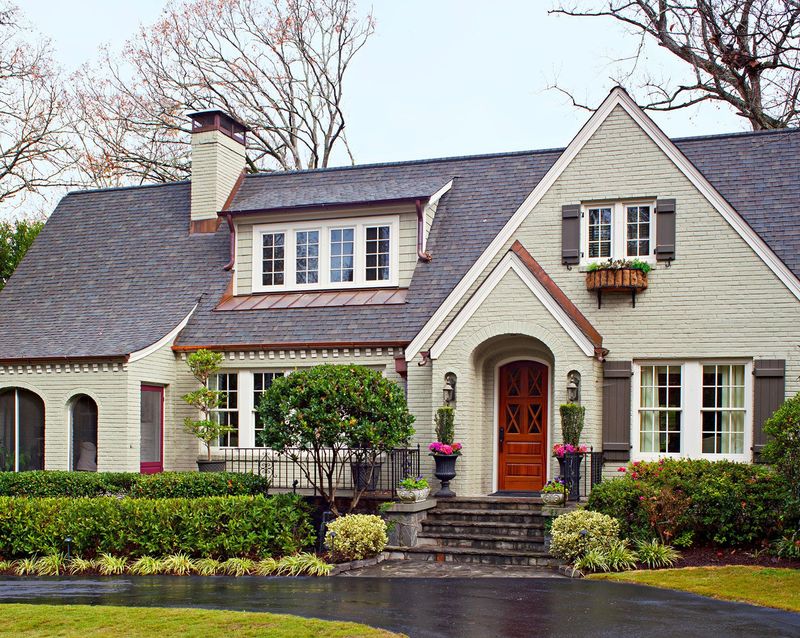
Often overlooked, your roof color significantly impacts overall exterior harmony. That black roof might make your dream teal door look oddly disconnected from the rest of your home.
White trim offers flexibility with almost any door color. Dark trim pairs best with doors in similar depth—either both light or both dark. For red or brown roofs, consider door colors with similar warm undertones rather than cool blues or greens.
7. Avoid Clashing With Brick or Stonework
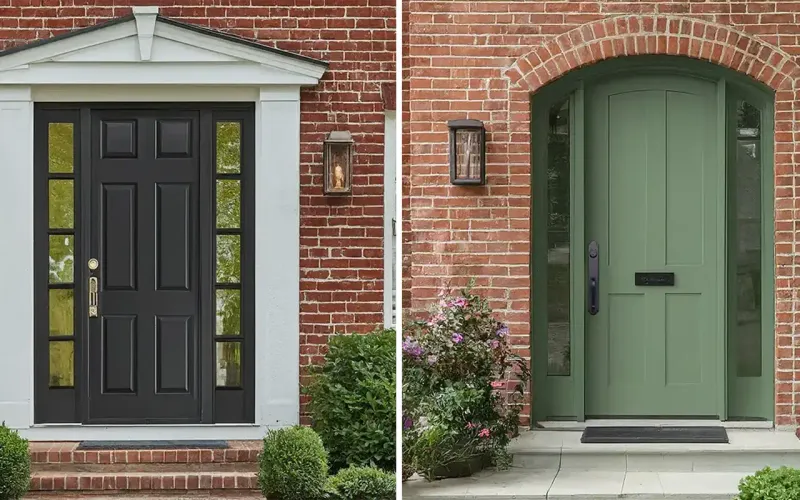
Brick and stone surfaces present unique challenges when selecting door colors. Their varied hues and undertones can either enhance or fight with your chosen door color.
For red brick homes, navy, dark green, or black doors create sophisticated harmony. Beige or limestone exteriors welcome nearly any door color, while multi-colored stone works best with doors that pick up one of the stone’s secondary colors.
8. Think About the Door’s Material and Finish
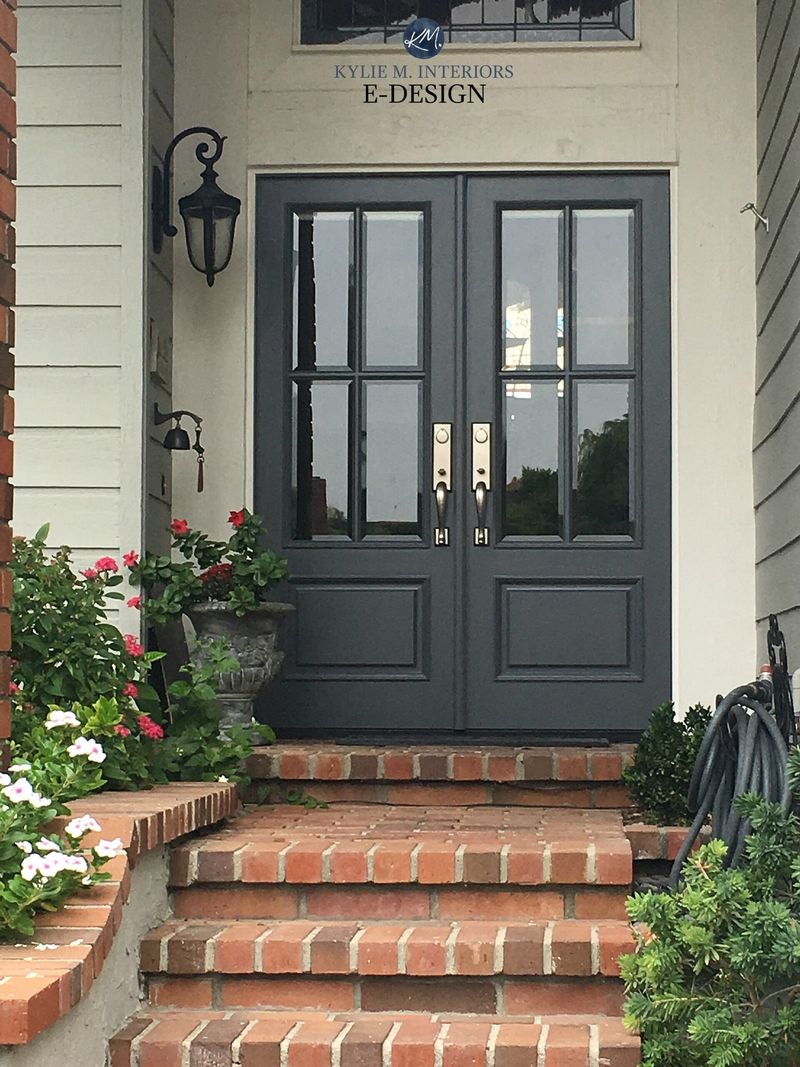
Wood, fiberglass, and steel doors each take paint differently and influence how colors appear. The door’s texture and finish—glossy, satin, or matte—dramatically alter color perception.
Natural wood doors often look stunning with transparent stains rather than opaque paint. Metal doors with high-gloss finishes make colors appear more vibrant and reflective. Fiberglass doors with wood grain textures need colors that enhance rather than fight their faux finish.
9. Take Neighborhood Context Into Account
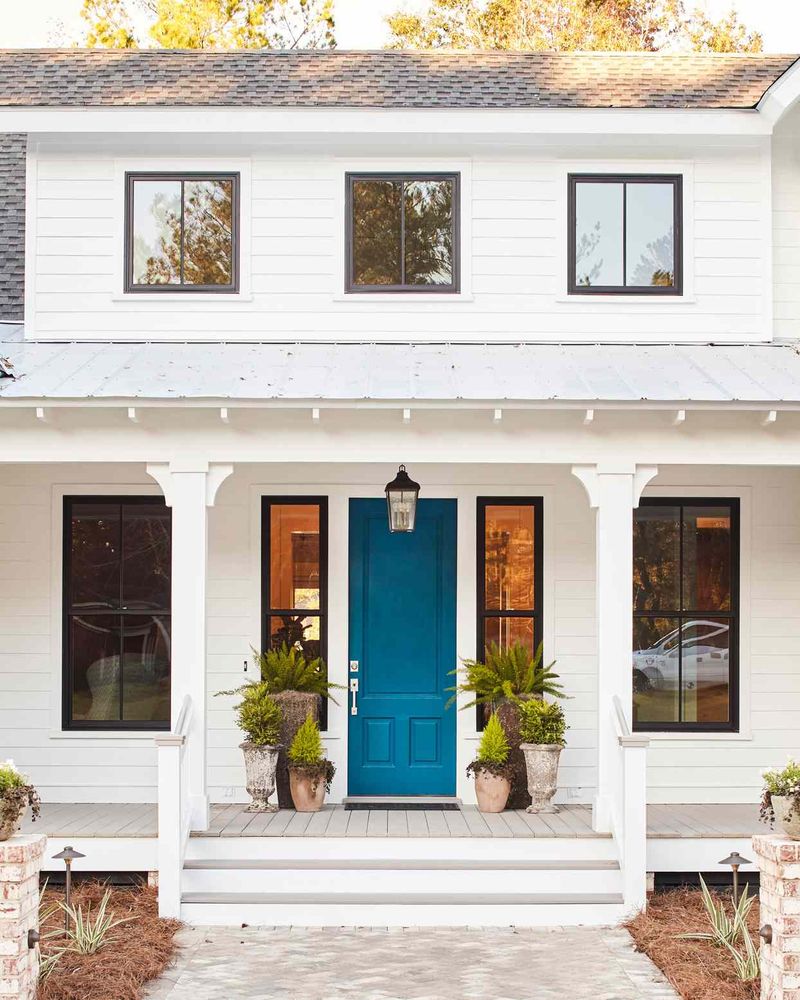
Standing out is wonderful—sticking out like a sore thumb, not so much. A quick neighborhood stroll can reveal which colors already dominate your street and which might feel jarringly out of place.
Historic districts often have color restrictions worth checking before painting. Even without formal rules, considering neighborhood character shows respect for your community. You can still express individuality through unique shades rather than wildly different color families.
10. Balance Boldness With Long-Term Appeal
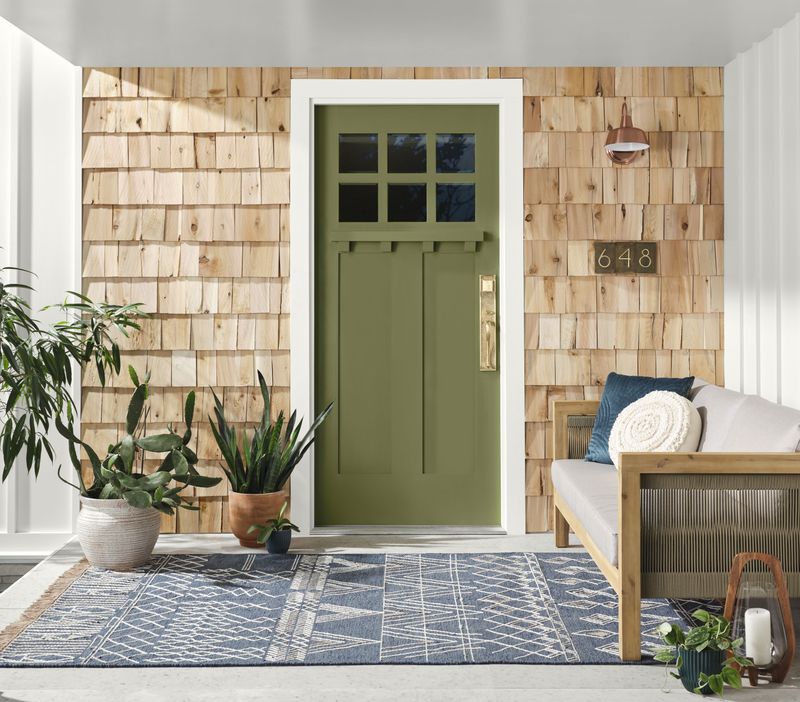
That electric lime green door might seem exciting today but could become tiresome after a year. Finding the sweet spot between personality and staying power requires honest self-reflection.
Ask yourself: Would you still love this color in five years? Semi-bold colors like teal, plum, or mustard often provide distinctiveness without becoming dated too quickly. Remember, repainting a door isn’t difficult, but choosing colors with some longevity saves future headaches.
11. Use Color to Highlight or Contrast
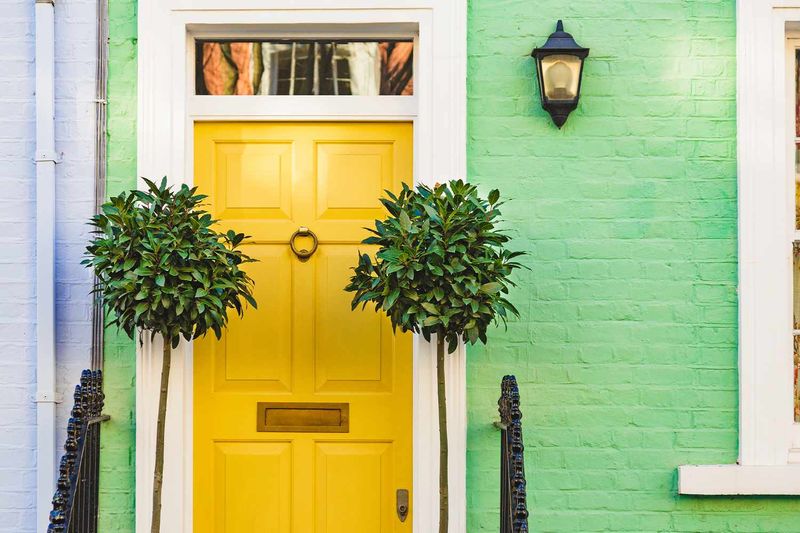
Strategic color selection can visually enhance your home’s best features or downplay less desirable elements. Color theory isn’t just for artists—it’s a powerful tool for homeowners too!
A brightly colored door draws attention to beautiful entryway details like transoms or sidelights. Conversely, choosing a door color similar to your home’s exterior creates a seamless, sophisticated look that can make a small home appear larger.
12. Follow Color Psychology Principles

Colors affect our emotions and perceptions in powerful ways. Red doors signify welcome in many cultures, while blue creates feelings of tranquility and security. Yellow radiates optimism but can appear jarring in certain contexts.
Green suggests harmony with nature and renewal. Black or charcoal doors convey sophistication and strength. Purple has historically represented wealth and creativity. Choose a color that not only looks good but also evokes the feelings you want visitors to experience.
13. Consider Seasonal Impact on Appearance
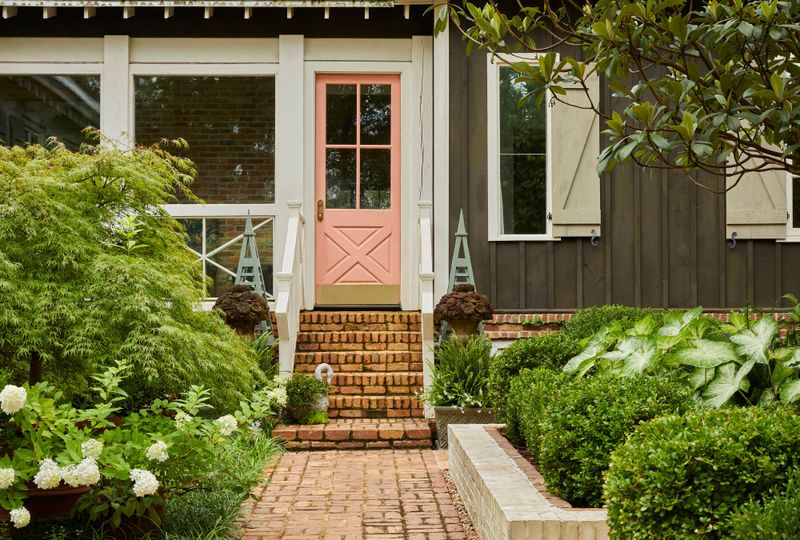
Will that perfect summer blue look depressing against winter’s bare branches and gray skies? Smart homeowners think year-round when selecting door colors.
Northern climates with long winters benefit from warm door colors like red or golden yellow that pop against snow. Southern homes with year-round greenery offer more flexibility. Consider how your door will look alongside seasonal decorations and changing landscape conditions throughout the year.
14. Don’t Forget the Hardware’s Finish
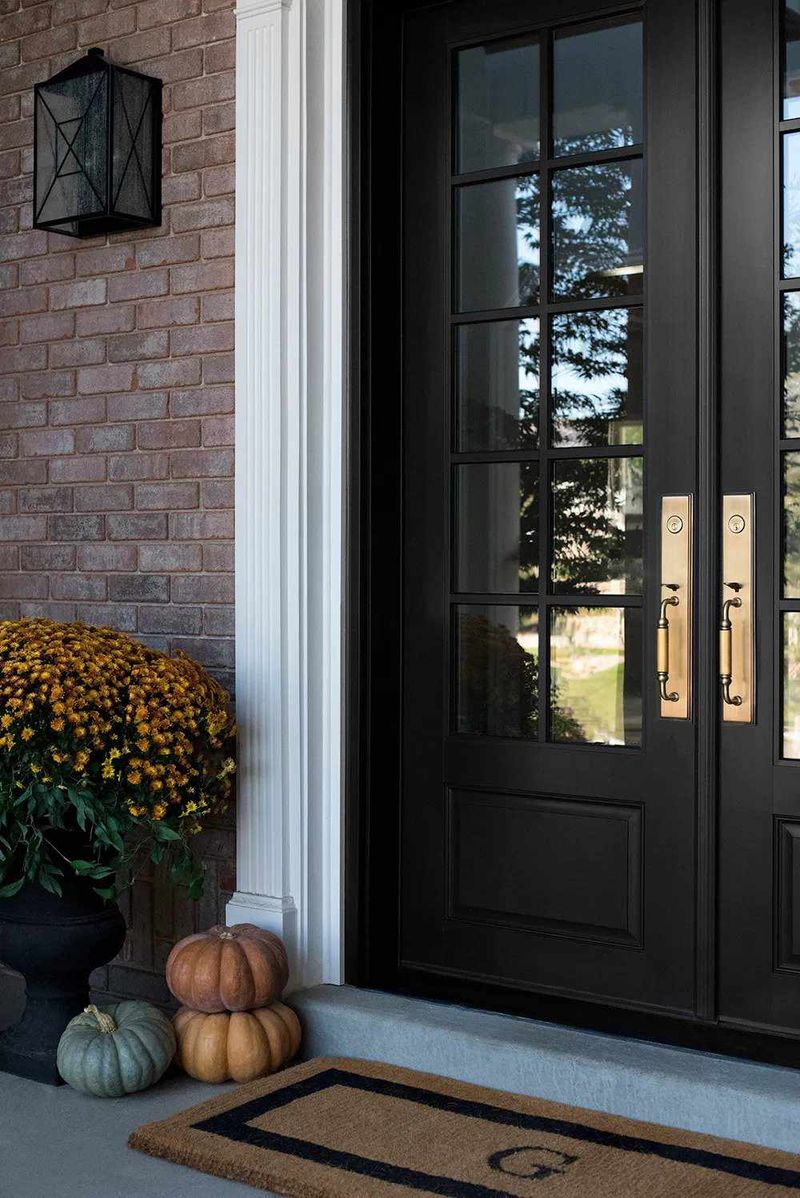
Your gorgeous new door color might clash horribly with existing brass hardware. The metallic elements—doorknobs, mail slots, knockers, and house numbers—must complement your chosen paint color.
Warm door colors like red or yellow typically pair beautifully with brass or bronze hardware. Cool blues and greens often look best with silver-toned metals like brushed nickel or chrome. Black doors? They’re versatile enough to work with virtually any hardware finish.
15. Go Timeless Over Trendy for Resale Value

Planning to sell within a few years? Real estate professionals consistently recommend door colors with broad appeal rather than highly personal choices. First impressions matter tremendously in home sales.
Navy blue, hunter green, and rich red doors consistently rank as buyer favorites. These classics offer character without polarizing potential purchasers. Neutral charcoal or black doors provide sophisticated curb appeal that rarely detracts from a home’s marketability.

